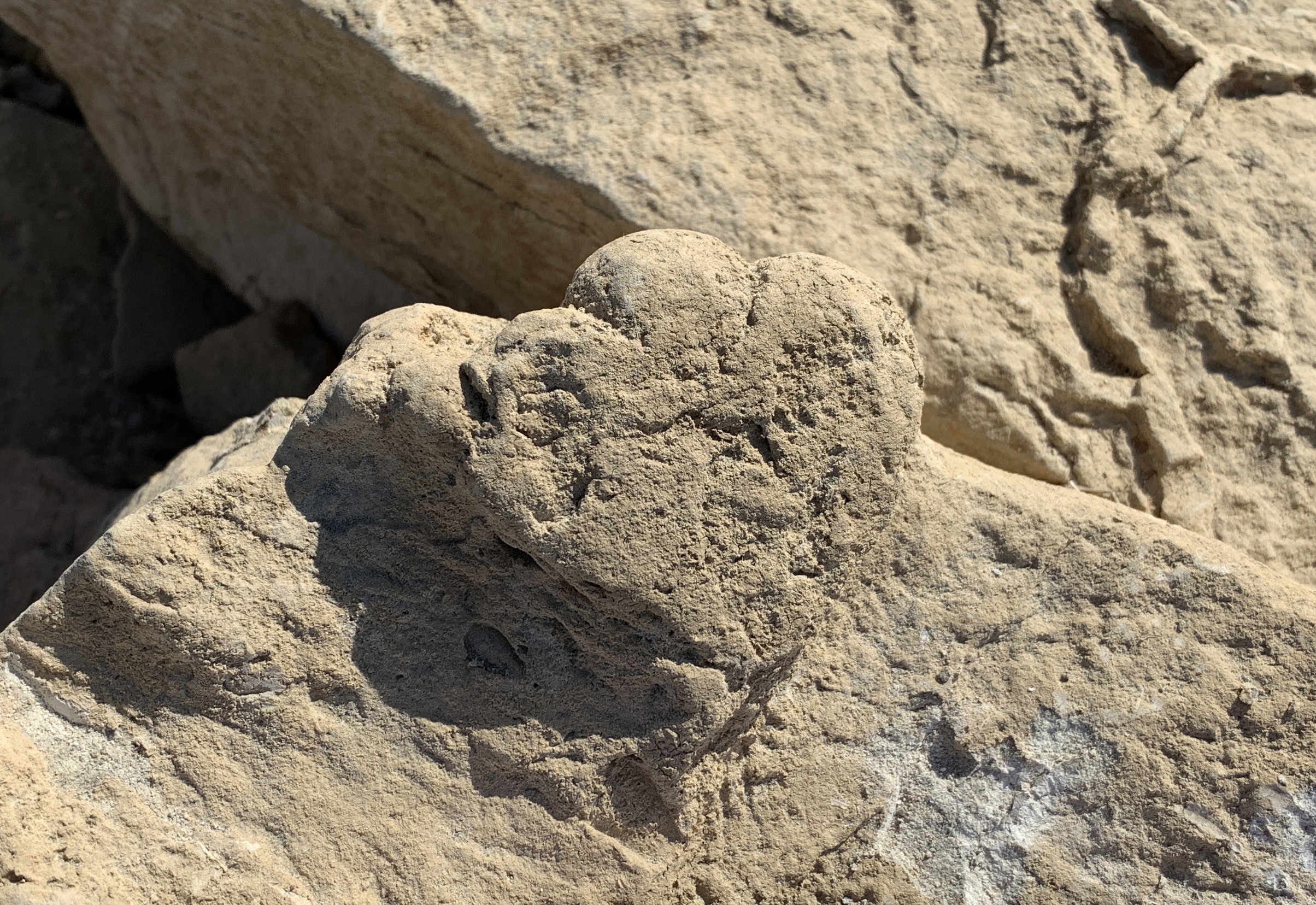Wee footprint of baby stegosaur discovered in China
The baby stegosaur was itty-bitty.

A hundred million years ago, a wee baby stegosaur pranced around on its hind feet in what is today China.
The footprint of this adorable, cat-size tot from the Cretaceous period was discovered in Xinjiang, a territory in northwest China. At only 2.25 inches (5.7 centimeters) long, it's the smallest stegosaur print ever found, the authors reported March 3 in the journal Palaios.
The site where the tiny prints were found was also pock-marked with large footprints from stegosaurs — a group of herbivorous dinosaurs that included the genus Stegosaurus — that averaged around 11 inches (29 cm) long at the back foot and about 5.3 inches (12.7 cm) long at the front foot. There was one tiny back footprint with the distinctive three-toed shape of stegosaurs. It's not clear which species the footprint belonged to, but skeletal remains of a species called Wuerhosaurus homheni have been found in the area. This species is known only from fragmentary bones, but from those scientists know it sported the iconic back plates that stegosaurs are famous for.
"Like the Stegosaurus, this little dinosaur probably had spikes on its tail and bony plates along its back as an adult," study co-author Anthony Ramilio, a researcher in the Dinosaur Lab at the University of Queensland, said in a statement.

Possible tiny stegosaur footprints have been found before, though whether they really belonged to stegosaur babies is controversial. Tiny tracks have been found near Morrison, Colorado, in rocks from the Jurassic period (199 million to 145 million years ago), but not all paleontologists agree that these footprints are fossils. One of the co-authors on the new paper, paleontologist Marin Lockley, a professor emeritus at the University of Colorado at Denver, argues that those prints are actually just chunks of irregularly shaped mud embedded in sandstone.
Unlike the larger tracks at the Xinjiang site, the tiny track was not elongated. This was intriguing to researchers, because it suggests the baby stegosaur may not have moved like its adult counterparts.
"Stegosaurs typically walked with their heels on the ground, much like humans do, but on all fours which creates long footprints," Romilio said. "The tiny track shows that this dinosaur had been moving with its heel lifted off the ground, much like a bird or cat does today. We've only previously seen shortened tracks like this when dinosaurs walked on two legs."
Get the world’s most fascinating discoveries delivered straight to your inbox.
It's possible that infant stegosaurs walked on their hind feet, transitioning to four feet as they grew larger, said study co-author Lida Xing, a paleontologist at the Chinese University of Geosciences in Beijing.
"A complete set of tracks of these tiny footprints would provide us with the answer to this question, but unfortunately we only have a single footprint," Xing said in a statement.
Originally published on Live Science.

Stephanie Pappas is a contributing writer for Live Science, covering topics ranging from geoscience to archaeology to the human brain and behavior. She was previously a senior writer for Live Science but is now a freelancer based in Denver, Colorado, and regularly contributes to Scientific American and The Monitor, the monthly magazine of the American Psychological Association. Stephanie received a bachelor's degree in psychology from the University of South Carolina and a graduate certificate in science communication from the University of California, Santa Cruz.


